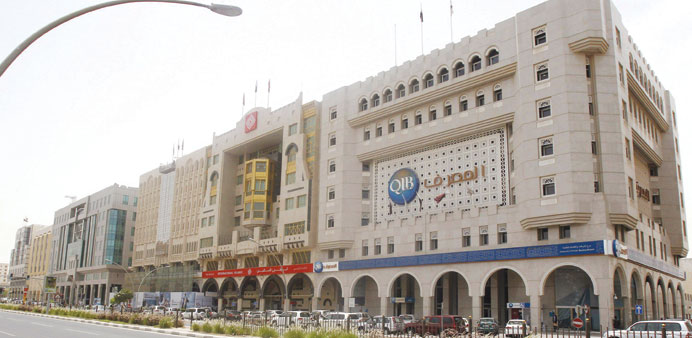Qatar’s banks’ credit is likely to grow by 14% to 17% year-on-year (y-o-y) in 2013, much lower than the average 27% expansion seen in the previous two years, according to a Barclays study.
The recent Qatar Central Bank (QCB) data showed a fall in credit during the first quarter of 2013, with quarter-on-quarter growth slipping to 1.5% from 5.6% in the previous quarter and 11.6% in the year-ago period, Barclays said.
The reason was attributed to a fall in GRIs’ (government-related institutions) credit loans, which may be partly due to some banks exhausting their internal credit limits to the key Qatari entities, according to the study.
“While it is early to confirm whether the deceleration trend would be sustained for the remainder of the year, we do think that 2013 annual credit growth is likely to be closer to 14-17% y-o-y, much lower than the previous two years (average of 27%),” it said.
Barclays believes that local authorities/banks are more conscious vis-à-vis possible liquidity risk build-up (following a record high loan-to-deposit gap reached in mid-2012 and increasing exposure to foreign fund inflows), while on the other hand, lenders are increasingly looking to diversify away from government-related sectors to the private sector (inside/outside Qatar) which don’t offer the same level of credit volumes as the large public sector entities.
Qatari banks’ credit growth has moved in tandem with the strong government expansion seen over the past few years, as reflected by an 18% growth over 2009-2012 and which has exceeded by far that of any of other Gulf banking sector, it said.
Unsurprisingly, GRIs emerged as the major driver of demand for credit, accounting for more than 57% of new loans underwritten in the past four years, it said, adding GRIs associated with transportation, real estate, and gas sectors were the key recipients of credit, echoing the government’s expansionary plans in these sectors.
On individual banks’ portfolios, it found that QNB was by far the dominant credit underwriter, capturing around 57% of new loans in the past four years (totalling QR266bn), followed by Masraf Al Rayan (11%) and Qatar Islamic Bank (10%) — which have both benefited from the QCB rules banning conventional banks from operating Islamic finance windows.
Moreover, QNB exhibits the largest exposure to the public sector among Qatari banks, while Doha Bank and International Islamic have the lowest exposure, it said.
Qatari banks maintain strong asset quality, as reflected by an aggregated non-performing loans (NPLs) ratio of about 1.7% as of December 2012, which ranks among the lowest against those of other neighbours (Saudi Arabia 2.3%, the UAE 8% and Kuwait 6.7%).
Moreover, individual NPL ratios have been in the 1-2.8% range for key banks with minor variations seen over the past years. “The buoyant domestic economic conditions, coupled with rapid credit growth, have helped banks sustain low NPL ratios,” it said.
The large banks’ credit exposure to government/GRIs (accounting for 41% of total loans), while resulting in significant credit concentration, contributed to low impairment levels, given the relatively solid credit risk profile of Qatari GRIs and expectations of strong government support when required, it added.
“We expect strong government spending to help preserve domestic credit defaults at low levels,” Barclays said, adding loans generated outside Qatar, however, currently accounting for only 7% of total loans, “could, as banks pursue a rapid expansion abroad, become an increasing source of asset quality pressure particularly since some overseas markets (like Egypt) are relatively challenging” and others such as Turkey are different in nature/culture.
The current capital levels, with Tier 1 ratios exceeding 13-14% are sufficient to support moderate overseas expansion and somehow mitigate concentration risk of significant domestic single name borrowers and sector concentration.
“We remain confident in the banks’ capacity to replenish capital, be it via government capital support (as seen in 2008 global crisis) or via internal capital generation (given strong recurring earnings power) and share/capital issues,” it said.
Regarding Basel III rules, although QCB has not provided any individual deadline for their implementation, Barclays said current capital adequacy of Qatari banks already exceed the Basel III/QCB minimum requirements (Tier 1 ratio of 8.5% and capital adequacy ratio of 10.63%).

